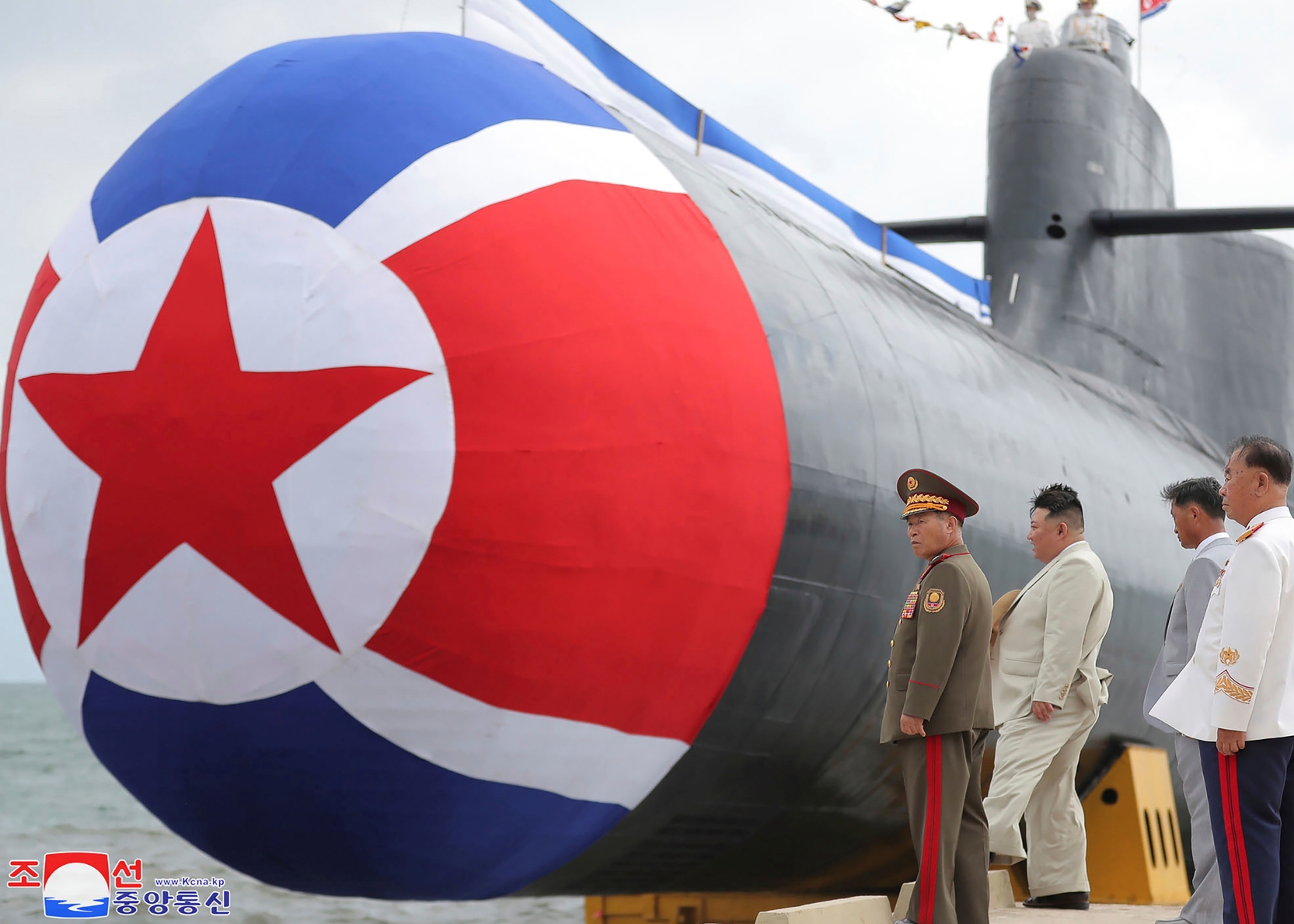
Intelligence obtained by South Korea suggests that its neighbor, North Korea, has received a nuclear reactor from Russia for the development of its submarine fleet.
Newsweek has emailed the Russian defense and foreign ministries for comment. North Korea’s embassy in Beijing did not immediately respond to a request for comment.
Why It Matters
Russia and North Korea formed a strategic partnership last year, committing both sides to mutual military aid. Pyongyang has provided troops and munitions to support the Kremlin’s war in Ukraine in exchange for Moscow’s military equipment.
In addition to its nuclear and missile developments, North Korea has been bolstering its naval force by building a nuclear powered guided-missile submarine and two 5,000-ton destroyers to counter the U.S. and South Korea, which possess superior navies.
Unlike diesel-electric submarines, nuclear-powered submarines offer virtually unlimited endurance, speed, and range, with food supplies as their only operational limitation. The U.S. and Russia are among the few countries that operate this type of submarine.
What To Know
Citing multiple South Korean government officials, the Korea JoongAng Daily reported on Wednesday that Russia is believed to have supplied “two to three nuclear submarine modules” to North Korea in the first half of the year, including a reactor.
Other modules included a turbine and cooling system, which are also core components of a submarine’s nuclear propulsion unit. These modules were not newly manufactured but taken from decommissioned Russian nuclear-powered submarines, the report noted.
One of the South Korean officials told the newspaper that Russia was initially reluctant to provide nuclear-powered submarine technology and advanced fighter jets to North Korea, which has been requesting them since last year, but eventually agreed to do so.
Seoul has shared the intelligence—which is undergoing verification of its credibility—with allies, including Washington, according to the report. In response, the South Korean Defense Intelligence Agency said it is closely monitoring related developments.
In March, North Korean state media revealed that a “nuclear-powered strategic guided missile submarine” is under construction and was toured by leader Kim Jong Un, who called the development of a nuclear-armed force an important part of national defense.
The U.S. operates a similar type of submarine—a fleet of four Ohio-class boats. They were converted from firing nuclear missiles to conducting conventional land attacks and are armed with up to 154 Tomahawk missiles, each with a range of 1,000 miles.
What People Are Saying
Russian President Vladimir Putin said in his meeting with North Korean leader Kim Jong Un in Beijing on September 3: “Relations between our countries have recently acquired a special dimension of trust, friendship and alliance … I would like to emphasize that your soldiers fought valiantly and heroically. We will never forget the sacrifices made by your armed forces and the families of your military personnel.”
Korean Central News Agency reported on March 8: “[Kim Jong Un] stated that the DPRK [Democratic People’s Republic of Korea] will never remain an onlooker to the naval and underwater military maneuverings of the enemies, who are seriously threatening its sovereignty and interests by constantly deploying large numbers of strategic assets, but reliably defend its maritime sovereignty and ensure a sure security guarantee on the Korean peninsula and the region through important innovations and changes of its naval forces and supremacy of its ever-developing strength.”
What Happens Next
It remains to be seen when North Korea will launch and commission its first nuclear-powered submarine, which may prompt South Korea to develop a similar submarine in response.



